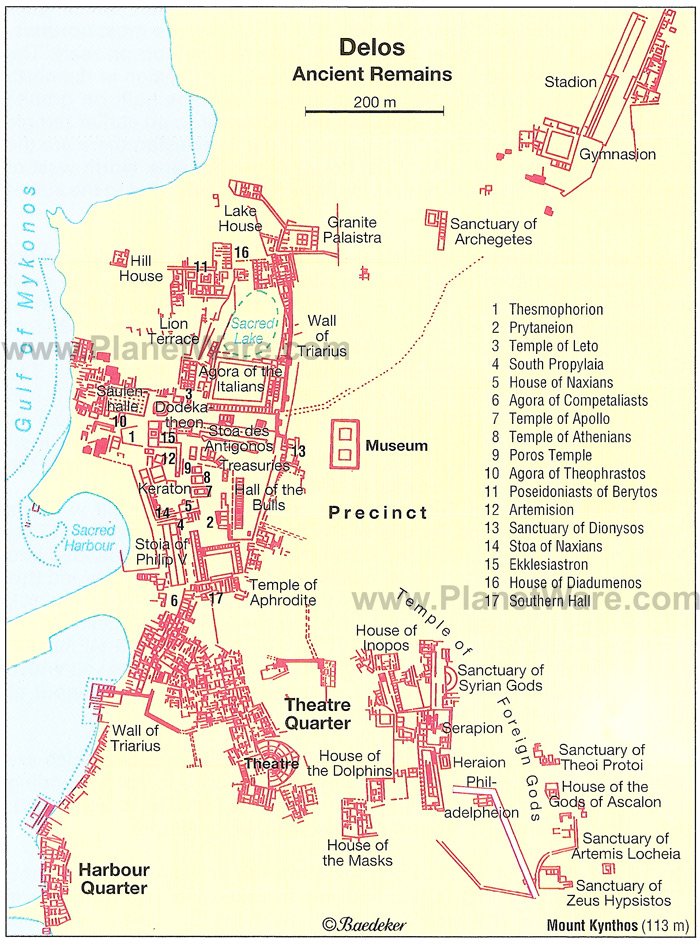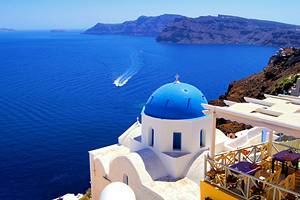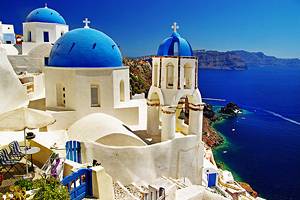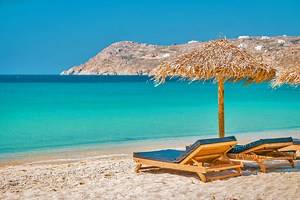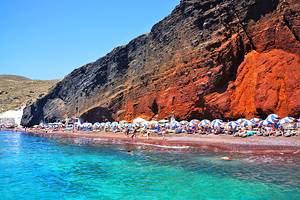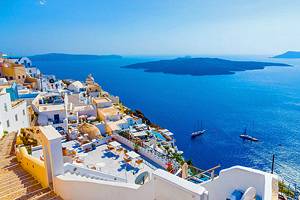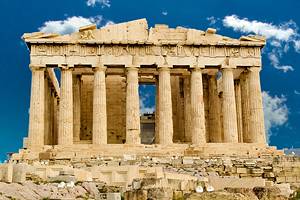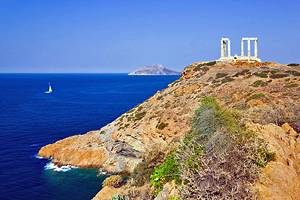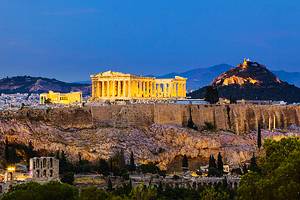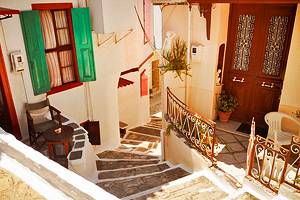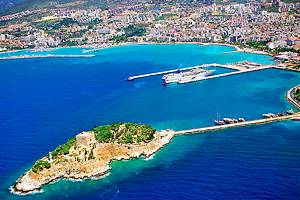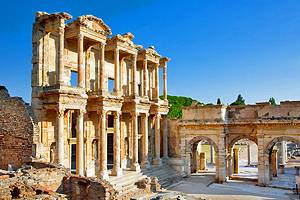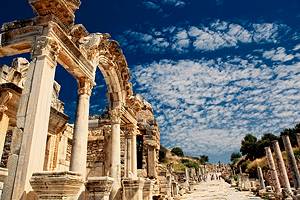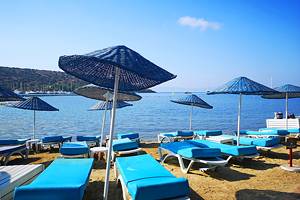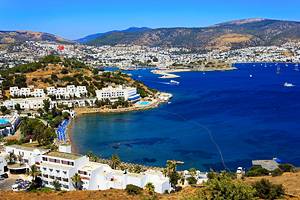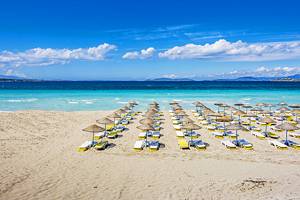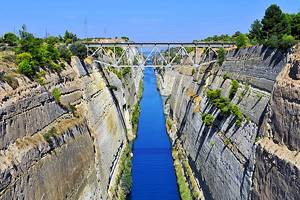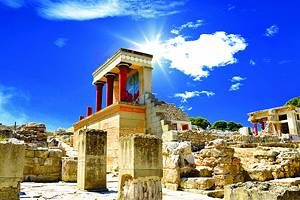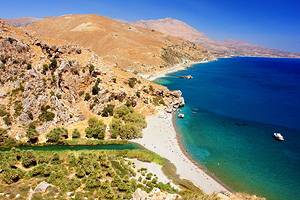Tourist Attractions & Things to Do on Delos
If you consider yourself a Greek history and mythology buff then Delos should be on your list of places to visit. This barren, rocky island just 10 kilometers southwest of Mykonos is said to be the birthplace of Apollo and Artemis, and today is one of the most important archeological sites in all of Greece. In ancient times, it was a place of such importance that islands surrounding it were called the Cyclades, as they lay in a circle around the sacred isle.
From the ninth century BCE onwards, Hellenes from all over the Greek world would make pilgrimages to Delos to pay tribute to Apollo. Then, when Delos was declared a free port in 167 BCE, it became one of the main trading centers on the Eastern Mediterranean. A town developed around the sanctuary, with wealthy merchants, bankers, and shipowners from afar building luxurious houses decorated with statues, frescoes, and mosaic floors. By 90 BCE, an estimated 30,000 inhabitants lived on Delos.
Today, this area is a UNESCO World Heritage Site and can be visited by excursion boat (journey time 30 minutes) from Mykonos. Pinpoint the best places to visit with our list of the top attractions and things to do in Delos.
Terrace of the Lions
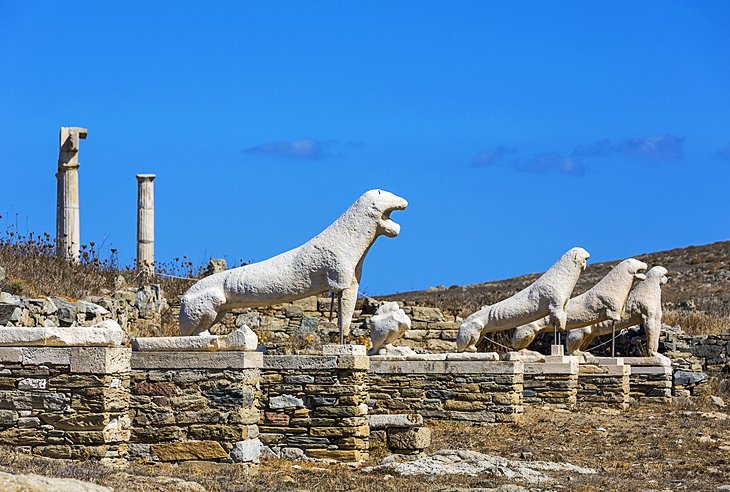
Overlooking the Sacred Lake, the Terrace of the Lions (also known as the Avenue of the Lions) is one of the most-photographed tourist attractions in Delos. It is home to a row of magnificent white marble lions – originally there were nine, but only five remain (in fact even these are replicas, the originals being on show in the Delos Museum).
One of the missing lions now overlooks the Arsenal in Venice, Italy, having been removed from Delos in the 17th-century. The lions, which are in a crouching position and seem to be guarding the lake, date from the seventh century BC and were a gift to Apollo from the people of the island of Naxos.
Sacred Precinct
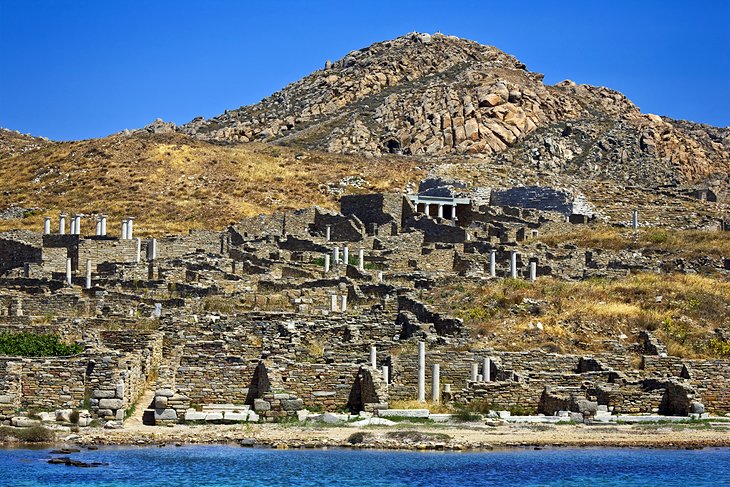
Although it is at first difficult to see its formation since it lies in ruins, the Sacred Precinct was once a large area filled with temples and alters from thousands of years of worship. The Sacred Precinct was approached from the south by a broad paved path, running between two Doric stoas, to arrive at the second-century-BCE Propylaia, the main gateway into the sanctuary.
Upon entering, you'll notice the ruins of two buildings on your right. These are the two oldest structures in the precinct and date back to the 6th-century BCE. From here, you reach three parallel temples of Apollo.
In the center of the precinct, opposite the temples, is the Keraton. It is an Ionic temple surrounded by columns built on granite foundations. The Keraton, which was dedicated to Apollo and contained a famous altar with rams' horns set round it, was probably built on the site of an earlier temple from the seventh century BCE.
Sacred Lake
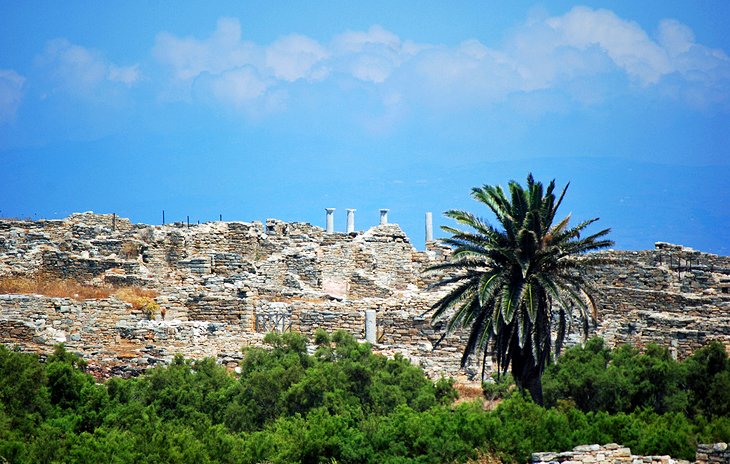
Swans once swam in the oval Sacred Lake, but today it is empty and has been since 1925 when an outbreak of malaria caused it to be drained. It was here, on the shores of the lake that, according to Greek mythology, Leto was believed to have given birth to Apollo, under a palm tree. The lake, which is overlooked by the Terrace of the Lions, marks the end of the Sacred Precinct.
Temple of Isis & The Archeological Museum
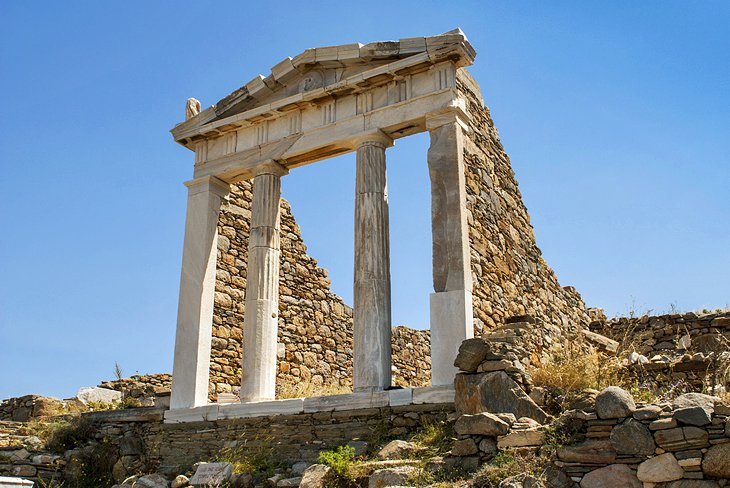
Built on a small hill is the restored Temple of Isis dating back to the 2nd-century BC. The Doric Temple houses the lower half of a statue (from the waist down) of the goddess Isis. Originally an Ancient Egyptian goddess representing the ideal mother and wife, Isis was later worshiped by both the Greeks and Romans. In front of the temple stands an altar to the goddess.
The archaeological museum is a 10-minute walk north of the Temple of Isis along a new path. The museum displays an impressive collection of finds from the site, although some of the finest items found here are now in the National Archaeological Museum and the Museum of Cycladic Art in Athens. In the two central rooms are works of Archaic art, including a marble tripod base with a ram's head and Gorgons (seventh century BC), a sphinx, several kouroi and korai (sixth century BC), a massive marble hand of the Naxian Apollo, and three seated figures of women (seventh century BC). There is a small café-restaurant next to the museum.
Theatre Quarter
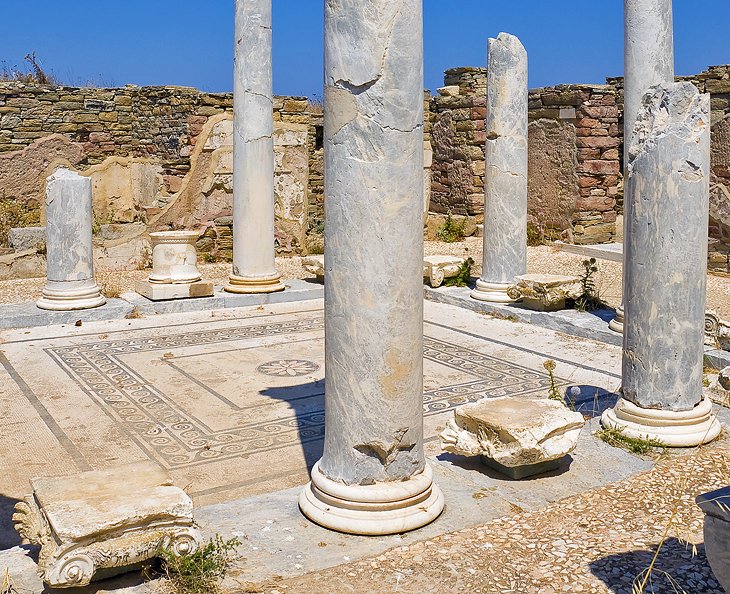
Lying between Mt. Kynthos and the commercial harbor, the so-called Theatre Quarter dates from the third to the second century BC. The narrow, winding streets are paved with slate slabs. The houses, many of which stand four to five meters high, had at least one upper story.
Particularly notable is the House of the Trident, which probably belonged to a shipowner or merchant and centers on a courtyard with a fine mosaic floor depicting a dolphin swimming around an anchor. On the southeast side of the quarter is the theater – a Greek-style auditorium with 26 rows of seats, which could accommodate 5,500 spectators. It was originally made of marble but is now partly ruined and overgrown with weeds.
House of Dionysus
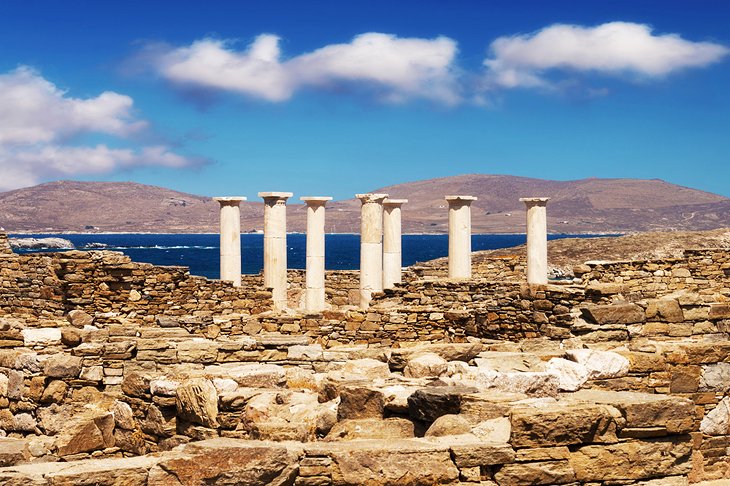
In the Theatre Quarter, the House of Dionysus is a fine example of a lavish private dwelling from the 2nd-century BC. One of the larger houses, it was originally on two levels, and you can still see the remains of a stone staircase that would have led to an upper floor. The highlight here is the central courtyard, rimmed by elegant marble columns, with a mosaic floor depicting Dionysus riding a tiger.
House of Cleopatra
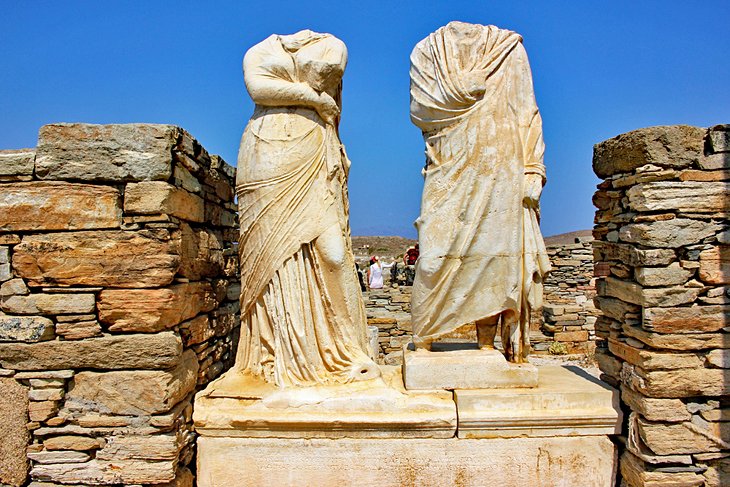
In the 2nd-century BC, this was a lavish Theater Quarter home owned by Cleopatra, but not the famous Egyptian queen. This Cleopatra, according to a plaque at its entrance, was the daughter of Adrastus of Myrrhinou, and the two headless statues inside the ruins of what was once a 12-room house set around two open courtyards, are that of Cleopatra and her husband Dioscorides. Why the statues were placed inside the home and not outside is not fully known.
Hiking Mt. Kynthos
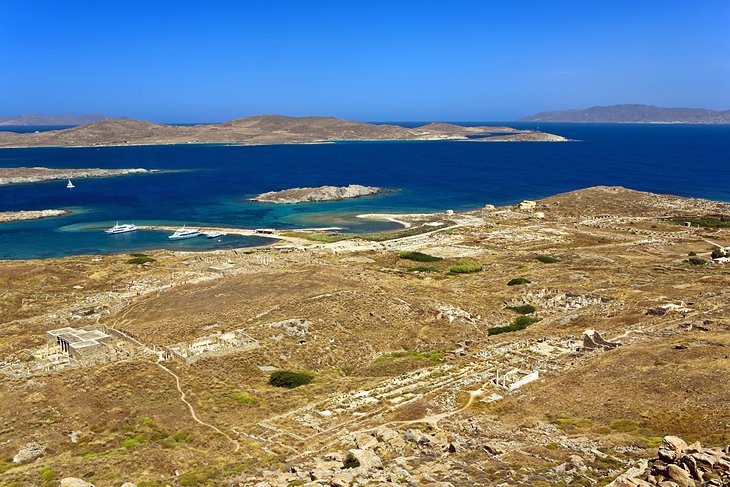
One of the favorite things to do on this island is to take a hike to the summit of Mt. Kynthos (113 meters), which offers panoramic views over the ruins and surrounding countryside. To the north, you will see the mountainous island of Tinos; to the east, Mykonos; to the south, the hills of Naxos; and to the west, Syros. To reach the summit, you'll follow an ancient path and stone steps to the rocky top, where in the 3rd-century BC, the Temple of Zeus and Athena once stood. Note that it can be very windy at the top.
Map of Tourist Attractions & Things to Do on Delos
More Related Articles on PlanetWare.com
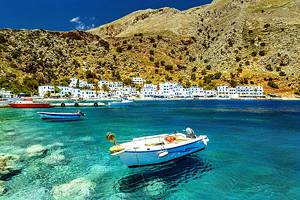
Greek Islands: Mykonos, which is where you stay when visiting Delos, is one of the most popular Greek islands. For more on the islands in general check out our guide to the Greek Islands. Another legendary vacation island in Greece is gorgeous Santorini. Learn more with our Tourist Attractions on Santorini article. Kefalonia is another beautiful isle in the Ionian Sea. Check out our article on the Tourist Attractions on Kefalonia.
